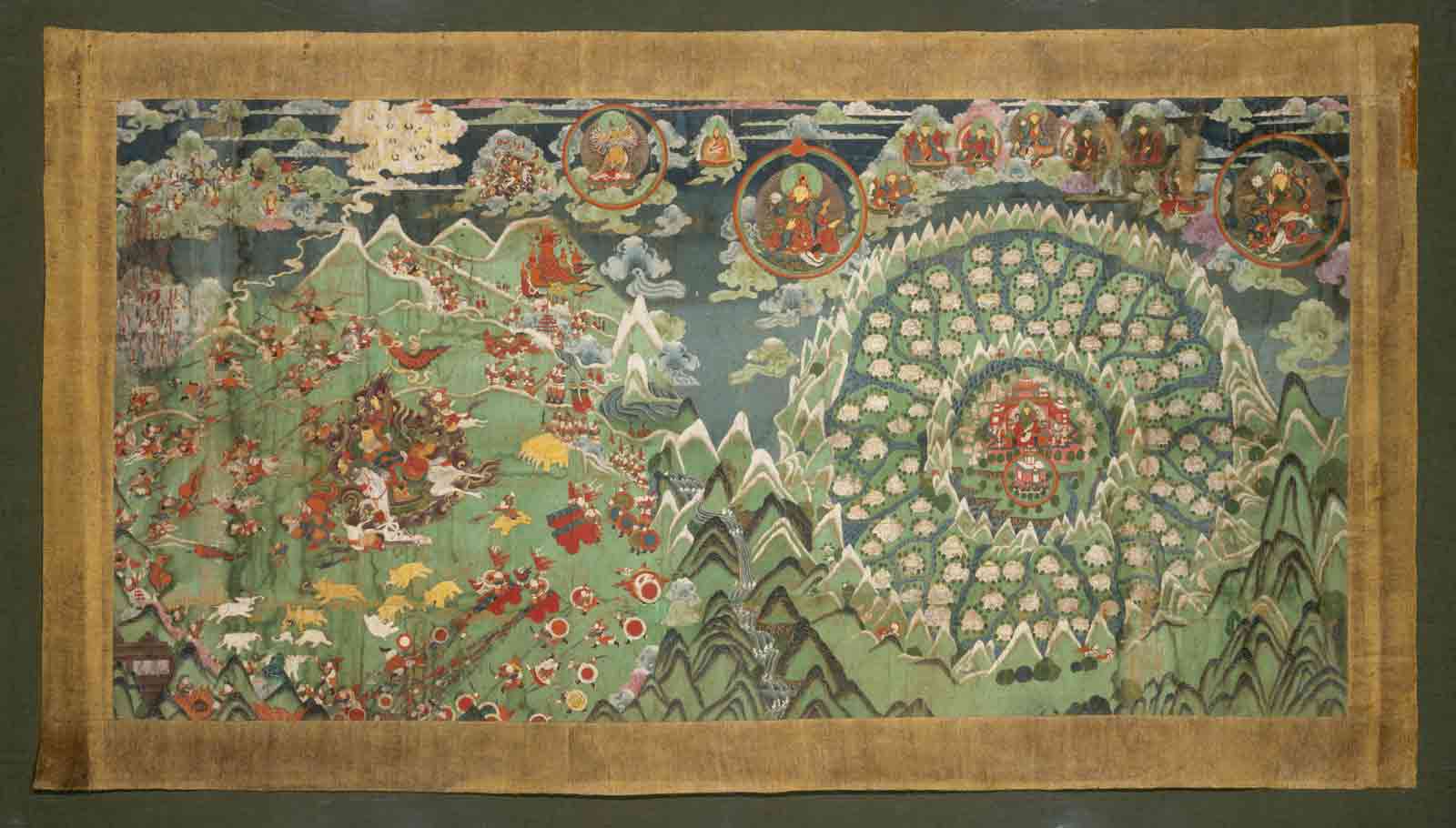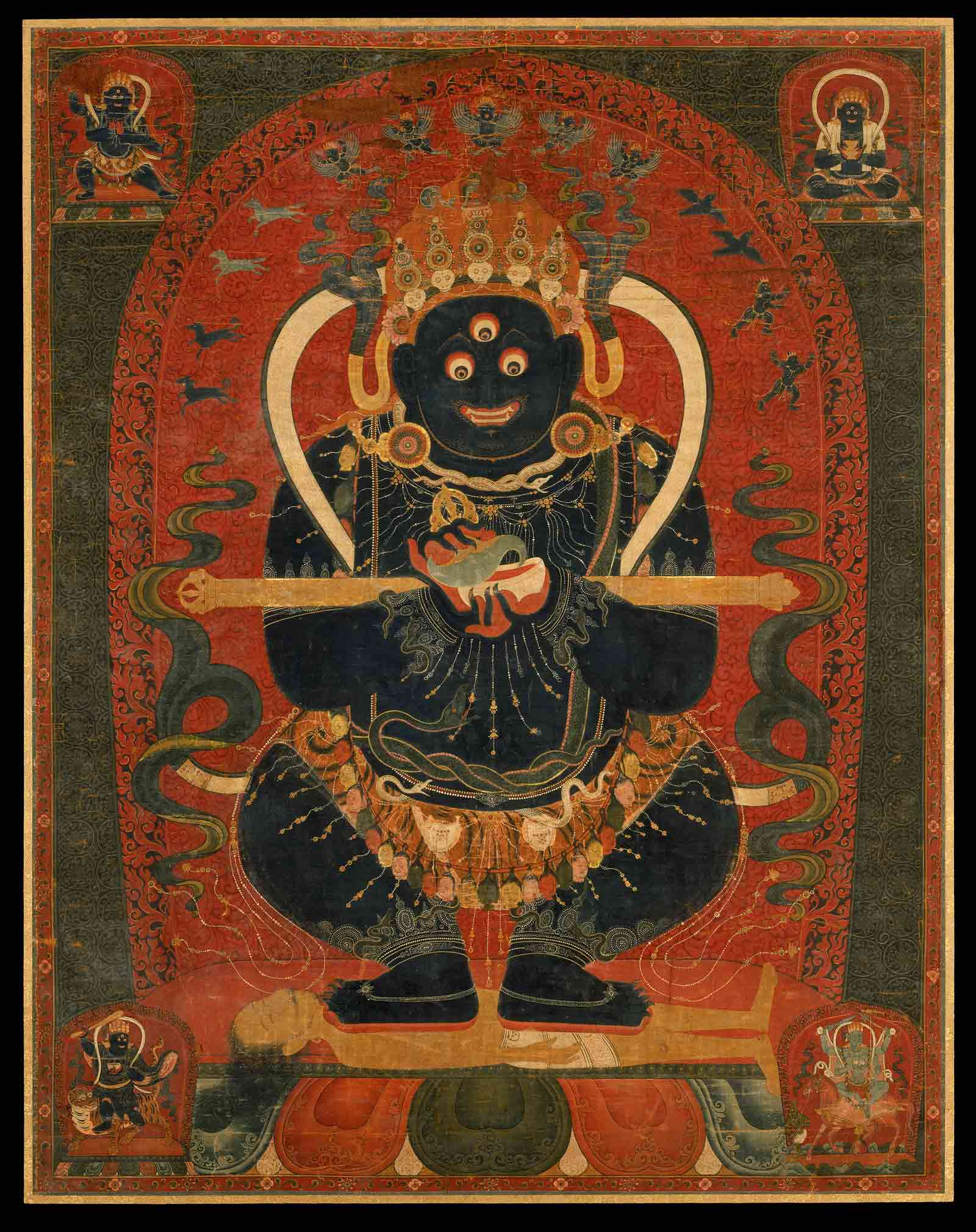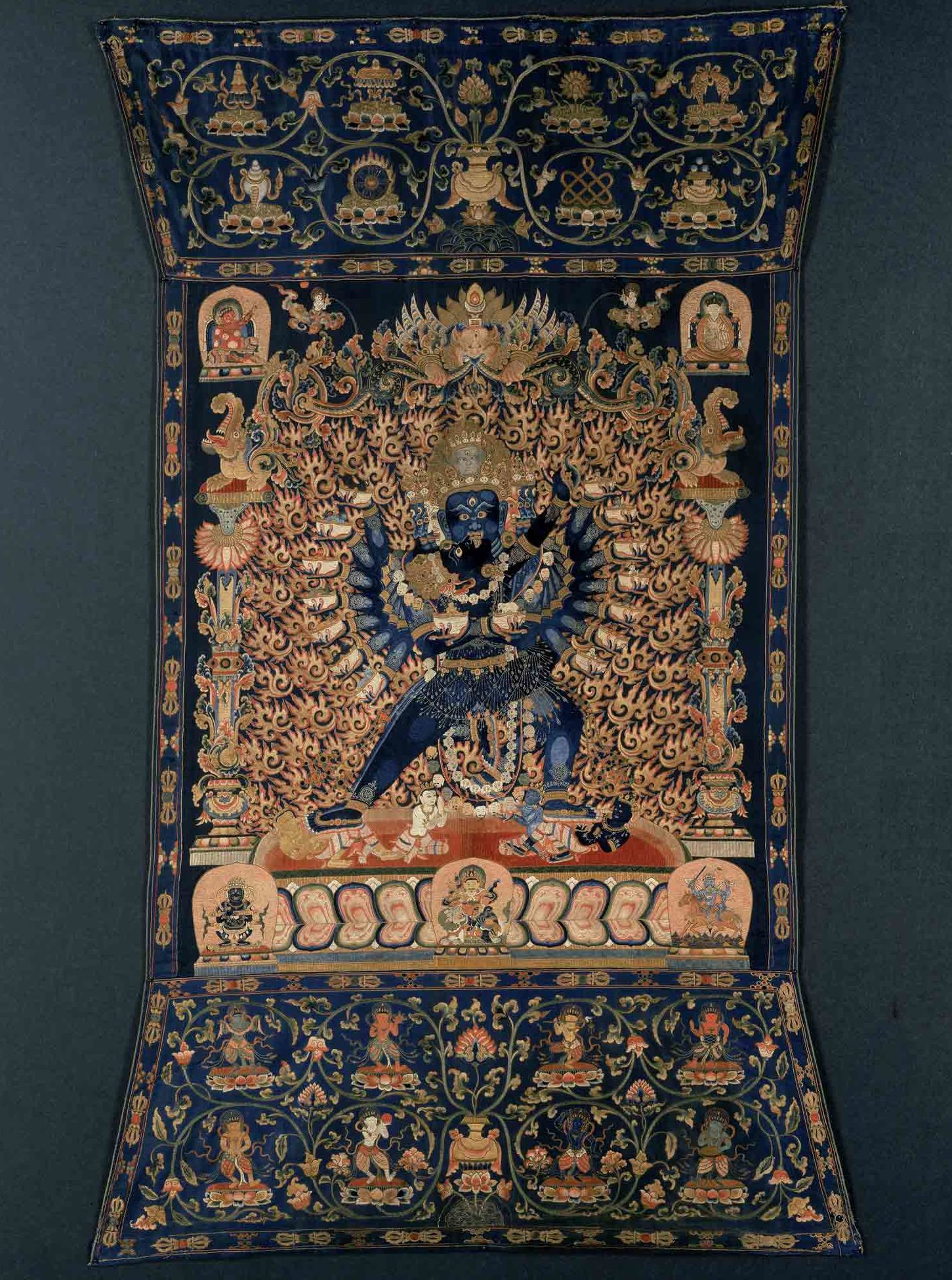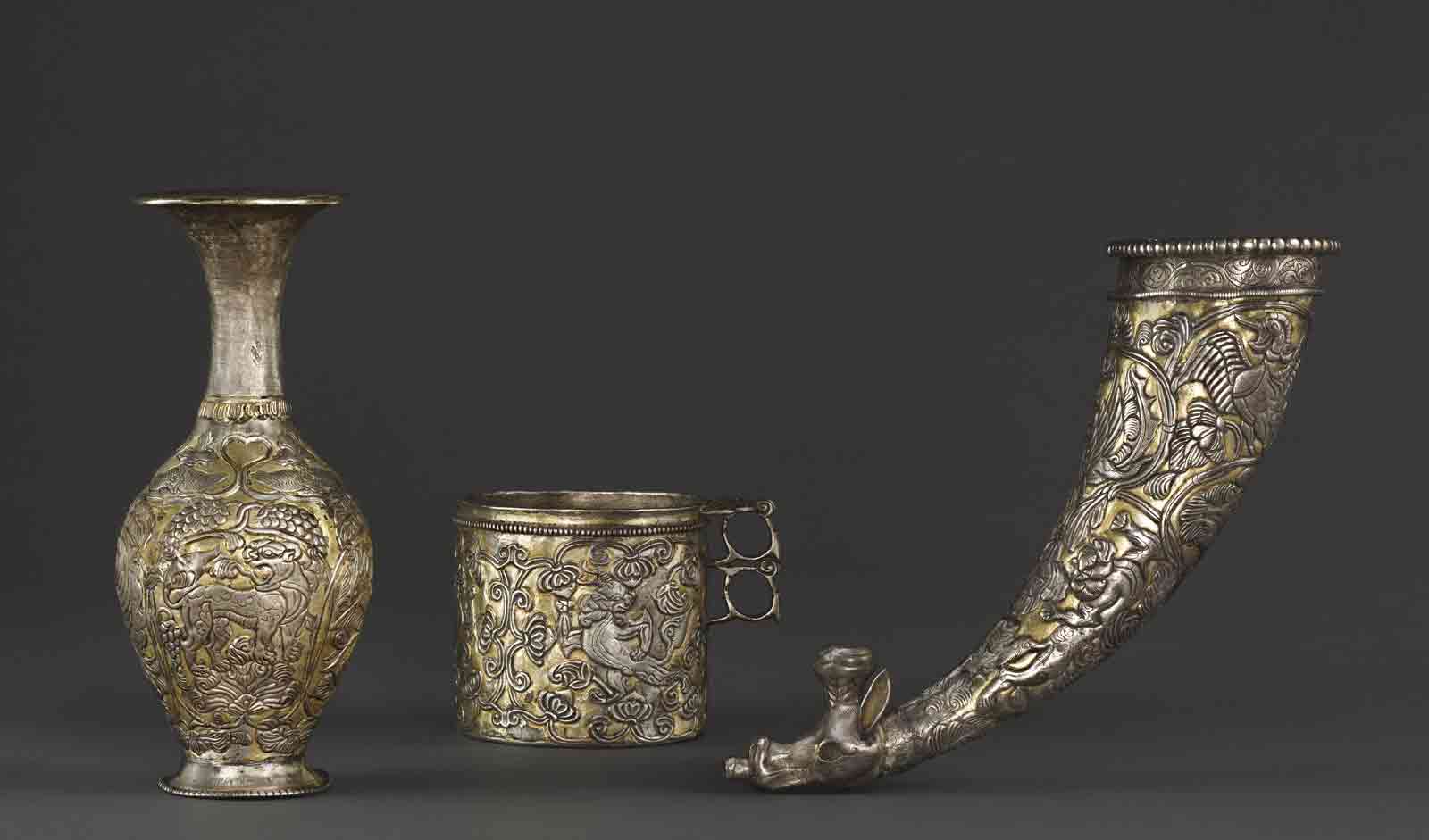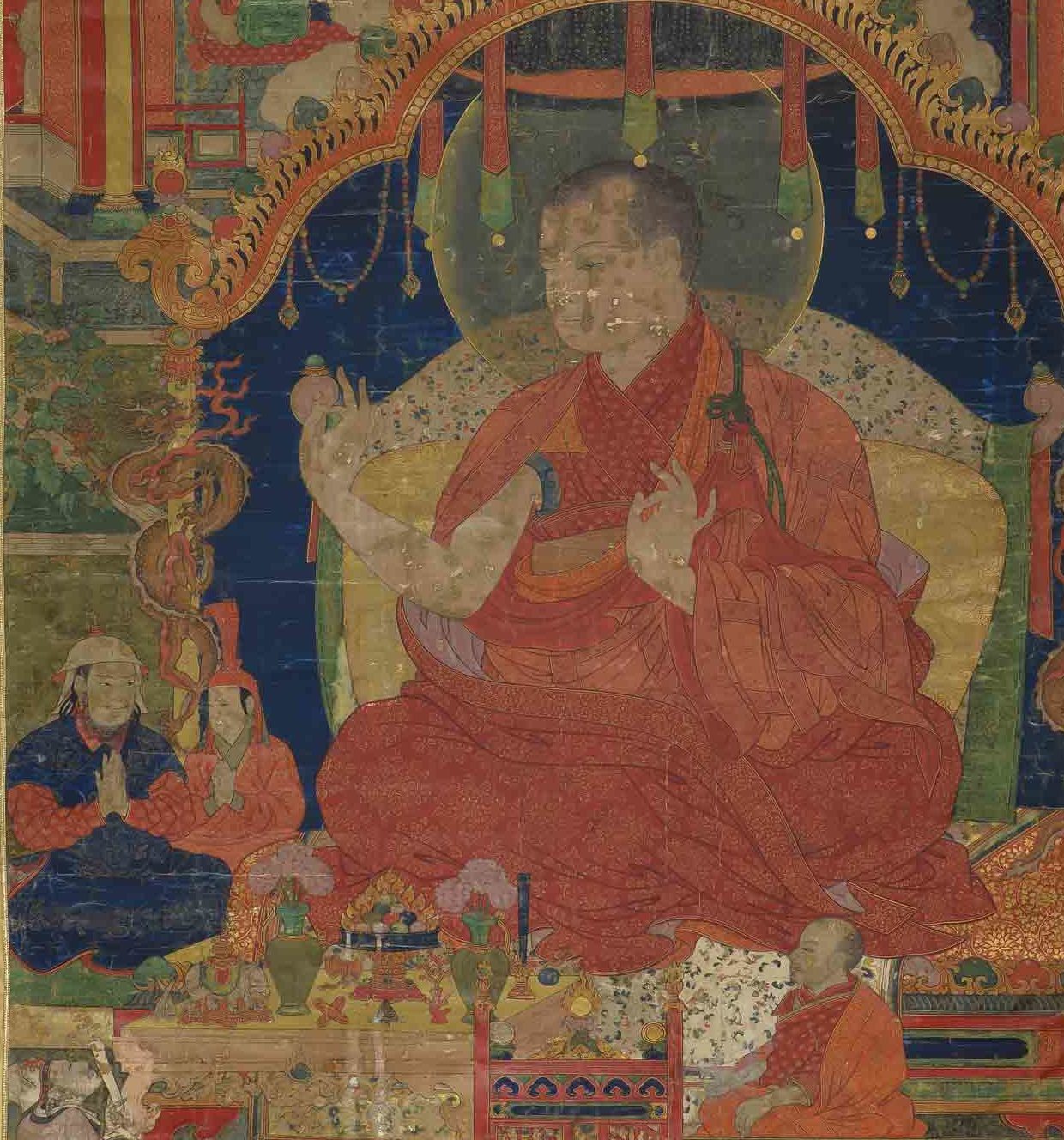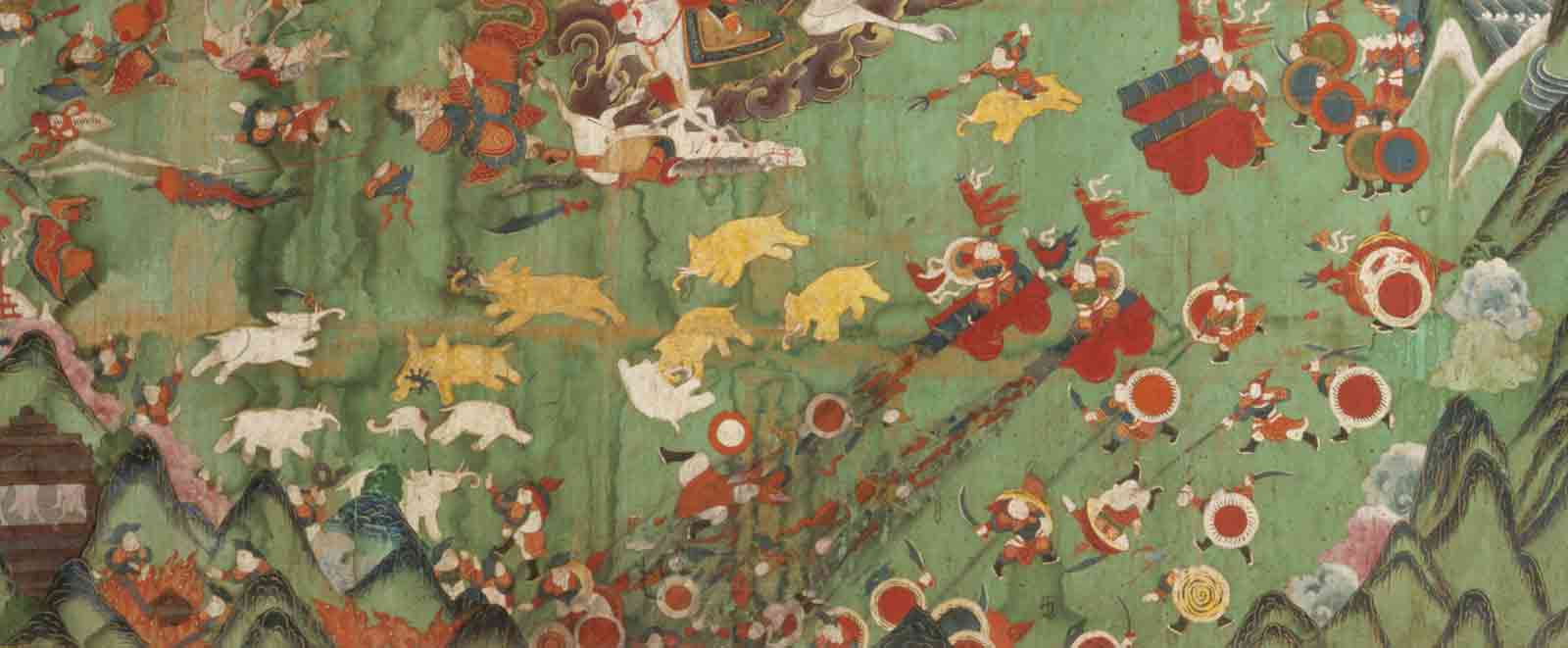One of the hallmarks of the past few decades has been the rise of religious-based nationalism in, for example, India, the United States, and the Middle East. And it has become routine in discussing these areas to make a link between politics and religion—be it Hinduism, Christianity, or Islam.
Buddhism, though, continues to flummox us. People are often shocked that it could be central to the violence of Sri Lanka or Myanmar, or the more than a hundred self-immolations that took place in Tibet in the early 2010s—self-inflicted acts of political violence that confounded both the Chinese government and many onlookers in the West. For many, Buddhism is “a religion of peace” and its adaptation for political purposes, even to inspire violence, feels flat-out wrong.
That makes the current exhibition at the Rubin Museum of Art, “Faith and Empire: Art and Politics in Tibetan Buddhism,” an especially welcome landmark, the first in-depth exploration of the topic. Tightly organized around some sixty items, the show is accompanied by a catalog of photos and essays by some of the leading scholars in the relatively new field of Tibetan studies. Together, the exhibition and the book go a long way toward demystifying Tibetan Buddhism, art, and politics, showing how closely they have been intertwined over the past thirteen hundred years.
Probably only the Rubin, with its extensive collection of Tibetan art and its deeply informed curatorial staff, could pull off such a show. The exhibition and catalog offer an unsentimental, non-Orientalist perspective on Tibet, in which violence is a normal part of the political and religious discourse, as elsewhere in the world.
That is a boldly challenging view, though—especially in the West, where the Tibetan spiritual leader, the Dalai Lama, enjoys a popular image as an irreproachable man of peace. But this overlooks the fact that the Dalai Lama began adult life as a theocrat leading a government with an army; only later did he transform himself into a Gandhi-influenced proponent of nonviolence who was awarded a Nobel Peace Prize. That transformation makes strategic sense, perhaps, for Tibetans in their struggle against an overwhelmingly powerful Chinese state, but it is a recent development, as the Rubin show reveals with its exploration of how, for most of Tibet’s history, Buddhism has served the state.
At its heart, “Faith and Empire” is about two phases of Tibetan history. One was the period of Tibetan glory in Central Asia, including the great Tibetan empire of the seventh to ninth centuries, and that of Tibet’s renaissance from the eleventh to the twelfth centuries. The second period was Tibetan Buddhism’s transformation from the thirteenth century onward into a bestower of sacral rule and occult powers, both of which seep into today’s romanticized views of Tibet and its spiritual practices.
Religion and politics have been inextricably linked in Buddhism since its beginnings in ancient India. This is especially true of Tantric Buddhism, which emphasizes rituals and magic. Although today Indian Buddhism manifests mainly as a protest movement against the hierarchism of Brahmanical Hinduism, in earlier times its practice was characteristically associated with small republics and royal courts.
It was in the seventh century that Buddhism arrived in Tibet, roughly coinciding with the kingdom’s rise to become a Central Asian superpower. It was the strongest military rival to China’s Tang dynasty and briefly occupied its capital, Chang’an. Buddhist monks were active on both sides, lending their spiritual authority to this power-struggle by use of rituals and the invocations of deities like the wrathful Acala.
When the Tang ceded control to Tibet of the Hexi Corridor, a vital segment of the Silk Road to Central Asia, Tibetan culture spread throughout the region. This was a multicultural empire, incorporating Greek medicine, a writing system based on Sanskrit, record-keeping drawn from the Tang, and silver-working from the Sogdians. Silver drinking horns and beakers on display are testament to this cross-fertilization.
When the Tibetan empire collapsed later that century in the wake of a power struggle and political fragmentation, the Tibetan influence in the region lingered, especially after the Western Xia empire of the Tangut people was founded, an area that corresponds to the eastern end of the Silk Road, especially in today’s Ningxia province. The Tangut emulated many Tibetan practices, and began a custom of appointing a Tibetan Buddhist monk as imperial preceptor, Western Xia’s highest religious figure. Most preceptors anointed emperors and advised them on religious matters, but at times they also wielded political power in their own right—as a preceptor did under the Yuan dynasty when the Mongol leader Qubilai Khan was granted suzerainty over Tibet. Buddhism thus served the state, with the Tangut presenting themselves as universal sacral rulers, legitimized through Tibetan Buddhist rituals.
Advertisement
When the Mongols obliterated Western Xia in the thirteenth century, they picked up many of these practices. One of the most memorable paintings in the exhibition shows a tiny Emperor Qubilai Khan in corner of the picture talking with his giant-sized imperial preceptor.
Interestingly, the Ming dynasty (1368–1644) also treated Tibetan Buddhism as a religious authority, even though the Ming was an ethnic Chinese regime that consciously presented itself as breaking with the traditions of Central Asia’s nomadic peoples. This is apparent in several beautiful pieces, including an intricate piece of silk embroidery on public view for the first time that was a gift from the Ming emperor Yongle to a visiting Tibetan lama. Because Yongle was a usurper, he needed a way to legitimize his rule. He did so by emulating Qubilai Khan, seeking, for example, initiation into the rites of Hevajra—another fiercely protective deity, deriving from the same sect as Qubilai Khan’s preceptor. The Chinese emperor was thus consciously modeling himself on his Mongolian predecessor in order to declare his own sacral authority.
The Ming never occupied Tibet, but they set up a series of temples along the border as a kind of soft power. These displayed opulent Buddhist icons amid grand, palace-like architectural settings, using sacred images to project temporal power in these contested regions by showing that they, too, worshipped the same deities. One example of this practice is a high point of the show, an almost life-size bronze Bodhisattva weighing 380 pounds that was lent to the Rubin by the Musée Cernuschi in Paris.
One of the most fascinating sections of the show, and of the catalog, deals with China’s last dynasty, the Qing (1644–1912), run by another nomadic people from the north, the Manchus. They, too, turned to Tibetan Buddhism for legitimacy and to bolster their military power with its spiritual authority.
One way the Manchus accomplished this was by using Buddhist stories and images to mobilize the Mongol soldiers who fought for them. A particularly graphic picture in the exhibition depicts the story of the Shambhala (a legend that eventually morphed into the fantasy of Shangri-La). In its original form, this was an end-times tale that foretold a Buddhist king leading his soldiers out of a hidden redoubt to annihilate all heretics and nonbelievers—whom the Manchus, in their telling, equated with the Qing’s enemies.
During a recent visit to the Rubin, I spoke with the show’s curator and editor of the catalog, Karl Debreczeny. He pointed out that, for many people in the West, Buddhism is completely divorced from its history. So many of the beliefs and rites have been stripped away in this view that many Westerners regard it purely as a philosophy, rather than a religion. As well-intentioned as this version of Buddhism might be, it is also a fantasy that places its practice on a higher moral and spiritual plane and erects an unbridgeable distance between us and its real, historical significance in Tibet.
“This exhibition tries to challenge the western romantic notion of Buddhism and Tibet,” he said. “These rulers were not interested in mindfulness, meditation, and yoga mats; they wanted to know what this religion could do for the state. One of the objectives [of the show] is to peel away these blinders and recontextualize the art.”
These ideas owe a great deal to the influence of Elliot Sperling, the venerated Tibetologist who died in 2017, at age sixty-six. An outspoken critic of China’s Tibet policy, he was also a pioneer in the study of Tibet—one who trained a generation of scholars, including Debreczeny himself. Unlike the explorers and chroniclers of the past, these new researchers learned to read Tibetan and Chinese, and to take the country and culture on its own terms, rather than be distracted by the projections of Tibet’s powerful neighbors, rivals, and patrons. Sperling’s classic 2001 essay “‘Orientalism’ and Aspects of Violence in the Tibetan Tradition” underpins many of the exhibition’s concepts, especially its realism about Tibetan politics and the integration of Buddhism with the needs of secular power.
Advertisement
This is not to deny the transcendent beauty in many of the pieces of art in this show. Rightly, they can be viewed purely on their merits as vivid expressions of fury, violence, peace, and splendor. But understanding their place in Tibet’s history enhances a deeper appreciation of this still-remote corner of the world and its remarkable journey over the past millennium.
“Faith and Empire: Art and Politics in Tibetan Buddhism” is at the Rubin Museum of Art, New York City, through July 15.


